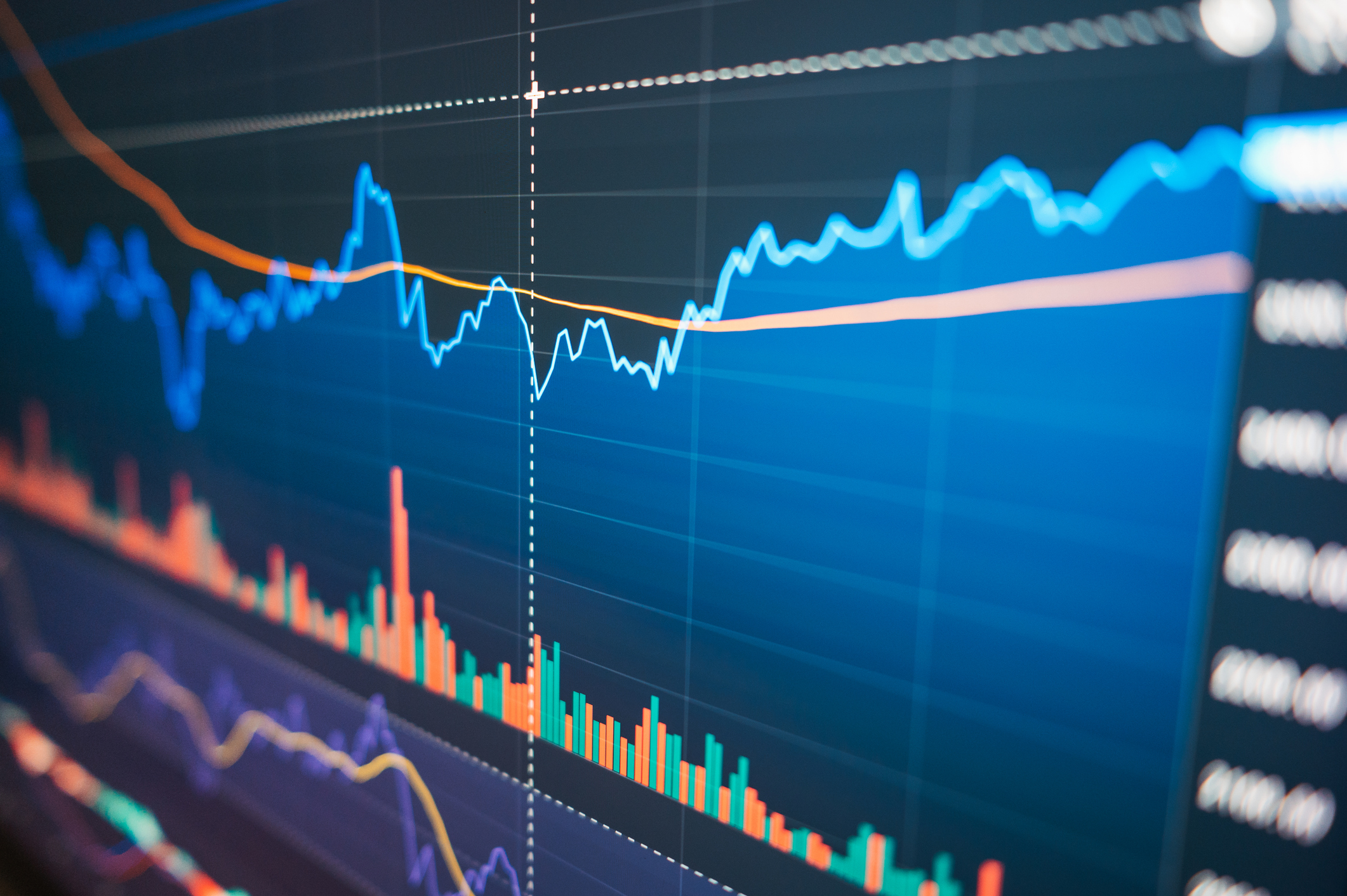Why I (Still) Hate Gold
The yellow metal has a mystique. But when all is said and done, it is just another commodity.

Let me put my prejudices on the table: I loathe gold. Not as jewelry but as an investment. In fact, I loathe all commodities. The main reason is that many years ago I fell under the spell of an exceptionally smart and likable economist named Julian Simon. In 1980, Simon proposed a wager with Stanford biologist Paul Ehrlich, author of The Population Bomb, a popular book that asserted that because of global population growth, demand for natural resources would soon outstrip supply.
Simon essentially bet Ehrlich that the total price of a basket of commodities that included chromium, copper, nickel, tin and tungsten would be lower in ten years. Simon, who died in 1998, won easily; the price of all five commodities dropped.
What I learned from Simon is that commodity prices don’t rise with increased demand from a growing population because of the wonders of the human imagination. We find ways to use finite resources more efficiently through recycling; we discover new methods to get more resources out of the ground (through fracking, for example); and we find substitutes (for example, plastic for iron, PVC for copper, electronic images on a screen for paper).

Sign up for Kiplinger’s Free E-Newsletters
Profit and prosper with the best of expert advice on investing, taxes, retirement, personal finance and more - straight to your e-mail.
Profit and prosper with the best of expert advice - straight to your e-mail.
But isn’t gold different? It is frequently called a “store of value,” and it has been used through the ages as currency. Certainly, the yellow metal has a mystique. But when all is said and done, it is just another commodity, subject to the same forces that made Simon confident he would win the bet. For example, for currency we’ve substituted silver and copper, cheap alloys, and ultimately paper. And we are using technology to get more gold out of the ground. Since 1900, gold production has risen from 400 tons a year to 2,500 tons. Since 1980 alone, production has increased by more than 100%.
Yes, there are periods when gold’s price soars (you can say the same for tungsten). But over the long term, I’d rather have my money in stocks, which put the brilliance and the imagination of the human mind on my side and allow me to benefit from the ability of people to create new ways of making profits rather than from the depletion of a commodity.

Writing in the New York Times in July 2001, I told readers to stay away from gold. At the time, the price of an ounce was $271. Today, it is $1,289. Whoops. Maybe my prejudices have gotten the better of me. Comparing prices, however, depends on where you start. Go back to 1980. After soaring in the latter part of the 1970s, gold peaked that year at $875. At the same time, the Dow Jones industrial average was trading at about 850. So, over the past 34 years, gold’s price has risen by less than 50% (far less than inflation), and the price of blue-chip stocks has climbed by a factor of 18 (and that doesn’t include dividends).
It’s not all glitter. Over the past half-century, gold prices adjusted for inflation have generally stagnated, with the exception of two huge spikes: from 1976 to 1980 and from 2001 to 2012. Stocks have their peaks and valleys, too, but the pattern is nowhere nearly as dramatic as with gold. The two spikes began in times of world turbulence: the stagflation of the late 1970s and the terrorist attacks of 9/11. Gold is often seen as a haven in stormy times. If the government devalues the currency or if barbarians crash the gates, you can fall back on the gold you have buried in the backyard. But gold is too heavy for convenient hoarding (as compared with diamonds, for example). It has to be tested to prove that it isn’t fake or diluted, and it is far from the only available haven. U.S. Treasury bonds have also proved attractive.
Nor is gold a particularly good inflation hedge, as Claude Erb and Campbell Harvey point out in their 2013 paper, “The Golden Dilemma,” in the Financial Analysts Journal. They write, “Given that the trailing ten-year real gold return was negative from 1988 to 2005, it is obvious that gold might have failed to live up to investor expectations as an effective long-term inflation hedge.” (Consumer prices rose 65% over that period.) Also remember that the recent run-up in gold occurred during a time of low inflation.
Because of its volatility, gold attracts traders, who try to find the bottom and ride gold to the top, then jump off and catch the bottom again. The problem with trading is that so few investors can do it profitably. Among the victims of the recent drop in gold prices was John Paulson, the hedge-fund manager who made billions by betting before and during the financial crisis that the price of many mortgage securities would collapse.
Though it may be hard to make money by trading gold, it has become easy to buy and sell the stuff. More than a dozen exchange-traded products let you bet on (or against) gold. The largest gold-oriented exchange-traded product, SPDR Gold Shares (symbol GLD), which directly tracks the price of the metal, was launched a decade ago and now has $32 billion in assets. SPDR Gold rose in price in each of the first eight years of its existence. However, it lost 28.3% in 2013, a year when Standard & Poor’s 500-stock index earned 32.4%. SPDR Gold’s five-year annualized return (through April 30) is now 7.3%, compared with 19.0% for SPDR S&P 500 (SPY), an exchange-traded fund that tracks the S&P index.
For trading purposes, you can make a case for gold, and that case can be summed up in one word: China. A study by the World Gold Council predicts that demand for gold in China will increase from the current 1,130 metric tons per year to 1,350 metric tons in 2017. China is the world’s largest gold market, and as its middle class grows from 300 million people to 500 million by the end of this decade, newly comfortable citizens will want more jewelry. China is also the world’s largest jewelry market, tripling in size over the past ten years. In addition, says the study, the Chinese government may decide to boost its gold holdings, which currently amount to only 1% of its foreign reserves. Meanwhile, for much the same reasons, gold demand in India is rising as well—up 13% in 2013, to 975 metric tons.
Miners over the metal. You can make a better case for investing in companies that mine and sell gold because they appear to be cheap. Shares of Barrick Gold (ABX), based in Toronto and with operations all over the world, have fallen by two-thirds in the past three years. Goldcorp (GG), another Canadian company, which mines in North and South America, has skidded from $55 to $25 over the same period. And shares of Randgold Resources (GOLD), which is based in the Channel Islands and mines in Africa, have dropped from $120 to $80 since October 2012. Or you can buy Market Vectors Gold Miners (GDX), an ETF that owns mining stocks, with Barrick and Goldcorp representing more than one-fourth of its assets. The fund is down 52% since the start of 2012. In my view, gold stocks have overreacted to the recent decline in the price of bullion. Shares of Barrick, for example, were higher in July 2000—when gold was less than $300 an ounce—than they are today.
What these companies have in common, besides relatively low prices, is the force of the human imagination, the object of Julian Simon’s enthusiasm. They have become more proficient at finding, processing and marketing gold. The price of the metal matters, no doubt. Randgold went from a $511 million profit in 2012 to a $326 million profit in 2013 after gold fell by more than one-fourth. I am not recommending gold in any form, but if you are bitten by the bug and convinced that the Chinese and Indians are going to stampede the jewelry counters, then buy gold stocks, not the inconvenient hard stuff or its ETF equivalent.
James K. Glassman owns none of the stocks and ETFs mentioned.
Profit and prosper with the best of Kiplinger's advice on investing, taxes, retirement, personal finance and much more. Delivered daily. Enter your email in the box and click Sign Me Up.

-
 Stock Market Today: S&P 500, Nasdaq Hit New Highs on Retail Sales Revival
Stock Market Today: S&P 500, Nasdaq Hit New Highs on Retail Sales RevivalStrong consumer spending and solid earnings for AI chipmaker Taiwan Semiconductor Manufacturing boosted the broad market.
-
 Higher Summer Costs: Tariffs Fuel Inflation in June
Higher Summer Costs: Tariffs Fuel Inflation in JuneTariffs Your summer holiday just got more expensive, and tariffs are partially to blame, economists say.
-
 5 Big Tech Stocks That Are Bargains Now
5 Big Tech Stocks That Are Bargains Nowtech stocks Few corners of Wall Street have been spared from this year's selloff, creating a buying opportunity in some of the most sought-after tech stocks.
-
 How to Invest for a Recession
How to Invest for a Recessioninvesting During a recession, dividends are especially important because they give you a cushion even if the stock price falls.
-
 10 Stocks to Buy When They're Down
10 Stocks to Buy When They're Downstocks When the market drops sharply, it creates an opportunity to buy quality stocks at a bargain.
-
 How Many Stocks Should You Have in Your Portfolio?
How Many Stocks Should You Have in Your Portfolio?stocks It’s been a volatile year for equities. One of the best ways for investors to smooth the ride is with a diverse selection of stocks and stock funds. But diversification can have its own perils.
-
 An Urgent Need for Cybersecurity Stocks
An Urgent Need for Cybersecurity Stocksstocks Many cybersecurity stocks are still unprofitable, but what they're selling is an absolute necessity going forward.
-
 Why Bonds Belong in Your Portfolio
Why Bonds Belong in Your Portfoliobonds Intermediate rates will probably rise another two or three points in the next few years, making bond yields more attractive.
-
 140 Companies That Have Pulled Out of Russia
140 Companies That Have Pulled Out of Russiastocks The list of private businesses announcing partial or full halts to operations in Russia is ballooning, increasing economic pressure on the country.
-
 How to Win With Game Stocks
How to Win With Game Stocksstocks Game stocks are the backbone of the metaverse, the "next big thing" in consumer technology.